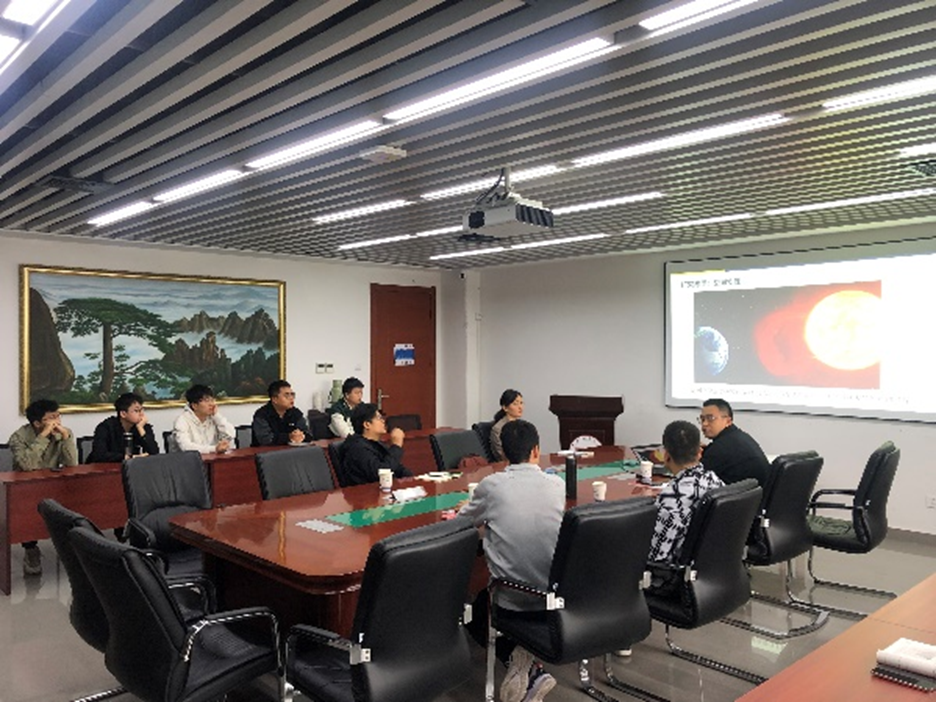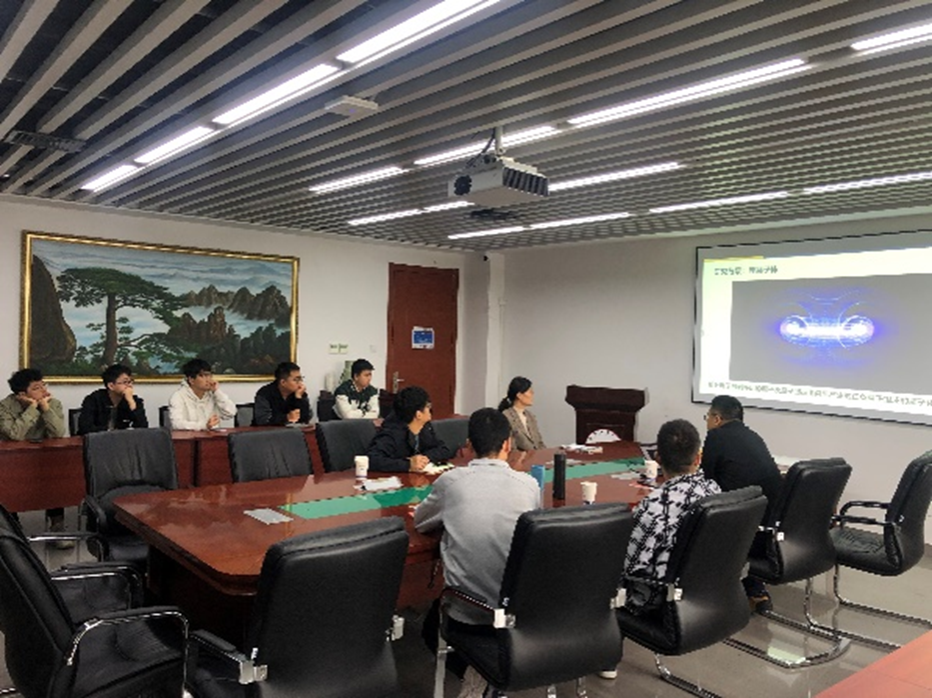On the morning of October 22, 2024, at the invitation of Professor Zhang Xiaohui from the School of Computer Science and Information Engineering, Professor Liu Yu from the University of Science and Technology of China delivered an academic lecture titled "Experimental Studies on Plasma-Neutral Interactions and Their Applications in Space Physics" in Conference Room 1104, Building A, Feicui Science and Education Tower. The event was attended by faculty members and graduate students from the School of Computer Science and Information Engineering.
In his lecture, Professor Liu introduced the background of his team’s research, covering the concepts of plasma and its formation mechanisms, as well as interactions between neutral and charged particles. He also highlighted the unique features and core technologies of the USTC Space Plasma Experiment (KSPEX) facility. Professor Liu provided a detailed explanation of key research findings, including the excitation of ionospheric electrostatic ion cyclotron instabilities, the propagation of electrostatic ion cyclotron waves in the ionosphere, and neutral-ion collision chemistry in the ionosphere of Titan.
Following the lecture, faculty and students engaged in discussions with Professor Liu on topics such as the significance of fundamental research, the construction of experimental facilities, and the integration of experimental observations with theoretical models. The session also explored potential opportunities for future scientific and technological collaborations.
About Professor Liu Yu:
Professor Liu Yu is a tenure-track professor and doctoral supervisor at the University of Science and Technology of China, and a recipient of the National Natural Science Foundation’s Excellent Young Scientists Fund. His primary research focuses on experimental space physics, an innovative field combining space physics and plasma physics. He independently designed and constructed a ground-based experimental device simulating ionospheric plasma and pioneered experimental laboratory studies on ionospheric-like plasma. This work has introduced new methodologies for space physics research in China.
Professor Liu has led his team to develop several original technologies, some of which have been applied in aerospace and national defense sectors. He has published 34 SCI papers as the first or corresponding author in journals such as GRL, APJ, and Phys. Plasmas, and holds four authorized invention patents. His research has garnered significant international attention, with over ten invited talks at conferences including COSPAR and IEEE. Additionally, he was invited by the editor-in-chief of Review of Scientific Instruments to write a comprehensive review on advancements in ground-based experimental facilities for experimental space physics over the past decade.


 TOP
TOP